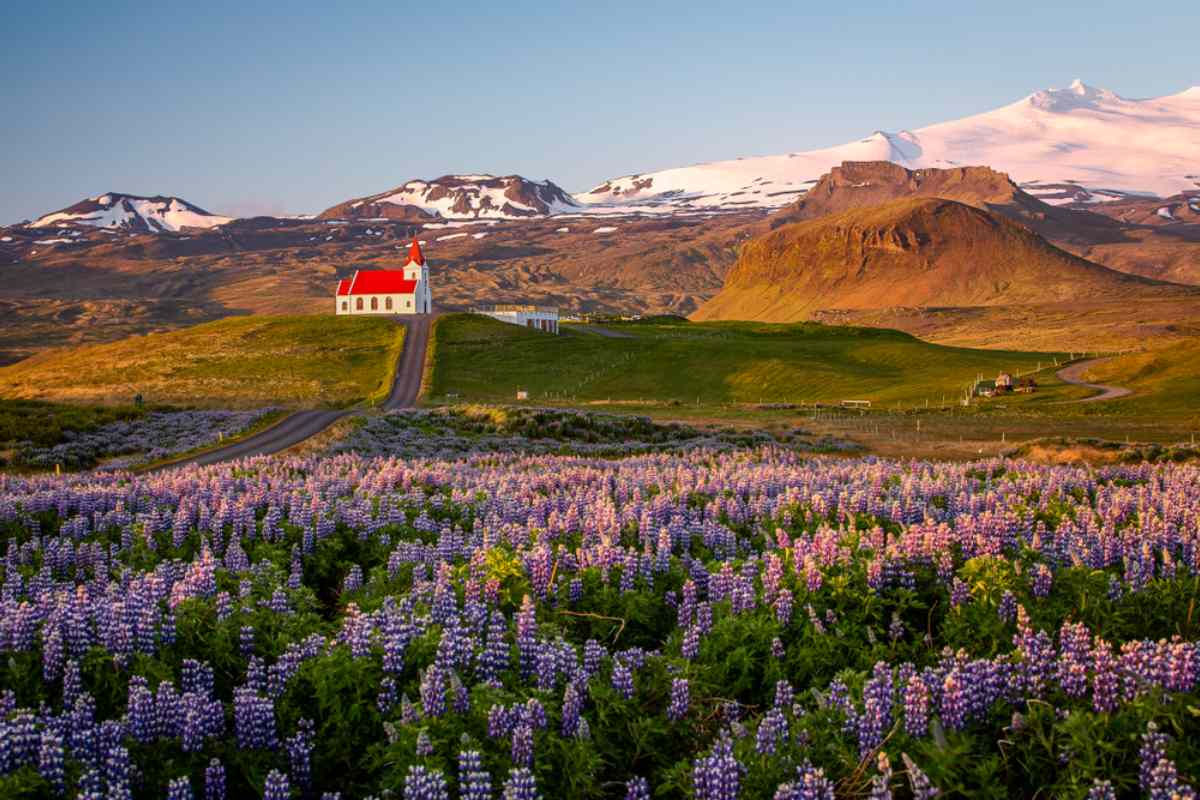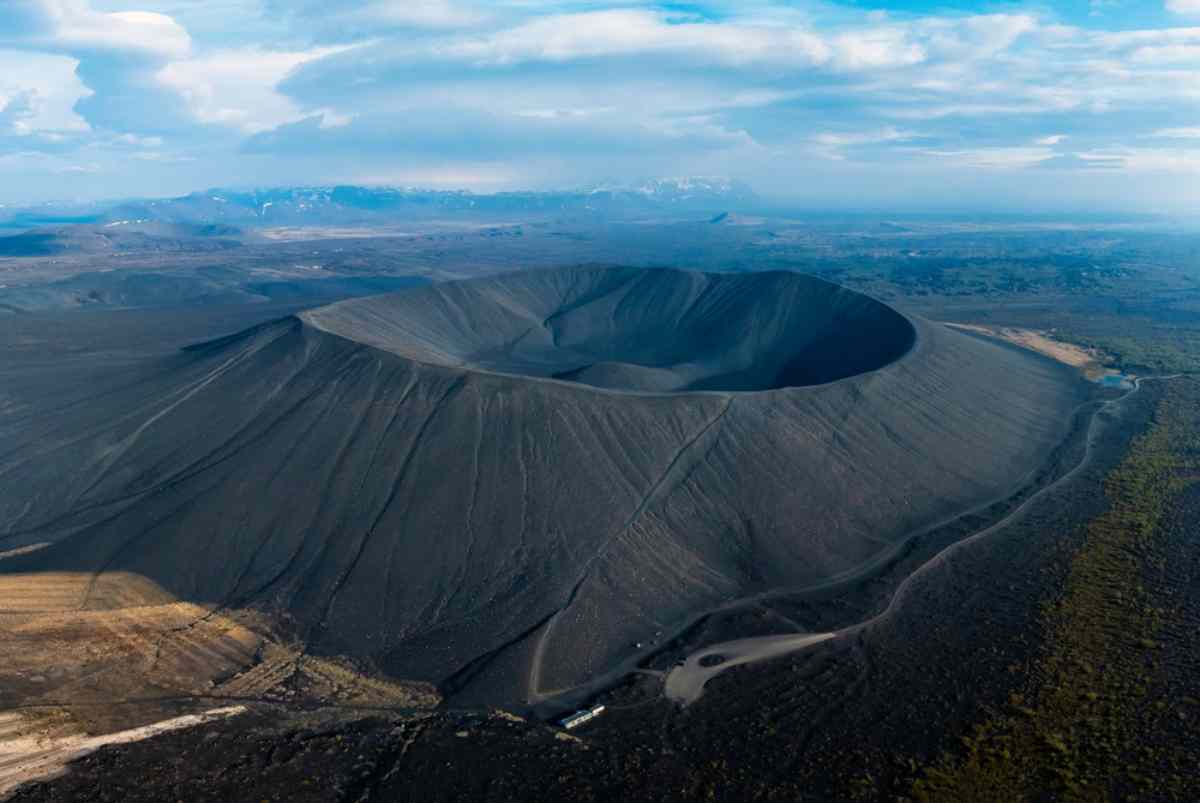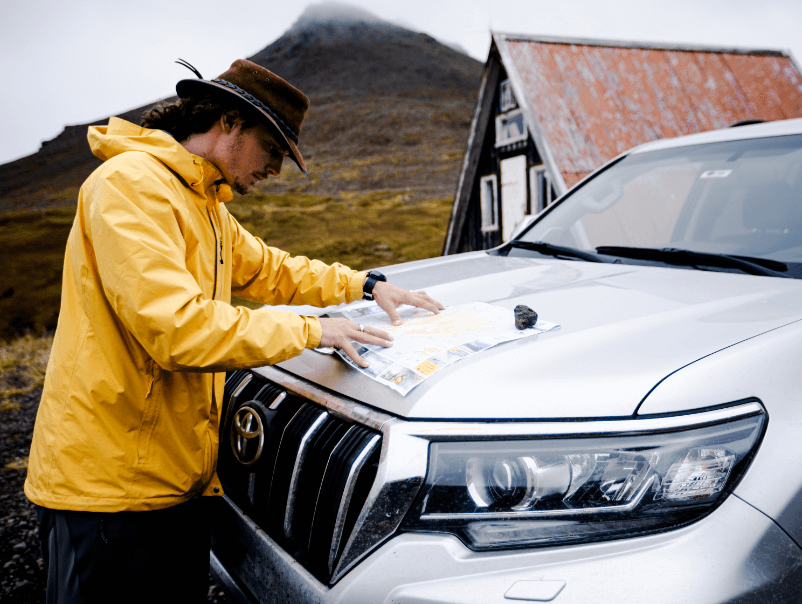Iceland in spring is a season of contrasts. Snow still clings to the mountains while fields slowly turn green. Days stretch longer, waterfalls run stronger, and wildlife begins to reappear. Tour buses are fewer, which means campervan travelers get the roads mostly to themselves. It is a time for open space and flexible plans.
Storms can sweep through without warning, but clear skies often follow. This guide covers the essentials of spring. From what the weather is really like, the best things to do, and how to make a campervan trip rewarding instead of chaotic.
When Is Spring in Iceland and What is The Weather Like?
Iceland’s spring weather doesn’t arrive politely. Winter just loosens its grip and sulks in the corner. Snow is still hanging on. Ice where you least want it. The winds? Calmer, thankfully. At least you can open a campervan door without it nearly ripping off the hinges. Temperatures crawl above freezing.
Not warm, but you stop worrying about frostbite. Most days run between 0°C and 10°C (32°F to 50°F). Here is a table about what Reykjavik averages normally to give you a better idea.
|
Month in Iceland |
High (°F / °C) |
Low (°F / °C) |
|
36 °F / 2°C |
28 °F / -2°C |
|
|
44 °F / 7°C |
39 °F / 3°C |
|
|
46 °F / 8°C |
41°F / 5°C |
Good to know: The sun feels cold even on a bright day, and you can still get sunburned. Put on sunscreen if you want to avoid looking like a red tomato in your photos.
The Pros and Cons of Iceland in Spring
Nothing here gets a free pass, not even Iceland in the spring. Some days it spoils you, some days it spits in your face. Here’s the rundown so you can decide if a spring trip is genius or just asking for trouble.
Pros
|
Spring Advantages |
What It Means for You |
|
No peak-season circus |
Skip the December crowds and the July traffic jams. You actually move. |
|
Lower prices |
Flights and campervans cost less. Not cheap, just less painful. |
|
Breathing room |
Waterfalls and viewpoints without the elbow fight. The island feels bigger. |
|
Longer daylight |
10 hours in March, 18 in May. More time for road trips. |
|
March and April are still dark enough for the aurora to show. |
|
|
Weather improves |
Blizzards are mostly gone. Still a moody mix of sun, rain, and wind. |
Cons
|
Spring Disadvantages |
What It Means for You |
| No midnight sun | Spring gives you longer days, but not 20+ hours. If that’s on your list, you’ll need summer. |
|
Roads still iffy |
March and early April can be slick, muddy, or closed. Ideal conditions come later. |
|
Seasonal closures |
Highlands and many F-roads remain shut. Some scenic routes stay off-limits. |
|
Limited access |
Trails, cliffs, or viewpoints may still be blocked or unsafe after winter. |
|
Shorter hours |
Tours, pools, and attractions don’t run full schedules. Some days closed, some only a few hours. |
|
Sparse transport |
Buses and ferries are less frequent. Miss one and you’re stuck waiting. |
|
Extra planning |
Daily checks on roads, openings, and transport are a must or risk wasting a day. |
The Best Things to Do in Iceland in Spring
Iceland in spring won’t leave you bored, far from it. The only real problem is picking what to skip, because you won’t fit it all in. Here’s a hit list worth throwing on your itinerary.
Road Trips in Iceland
Spring is when the roads finally let you roam. Campervan keys in hand, you can cover ground without fighting crowds, pulling over whenever something grabs your eye. Rent a campervan in Iceland and hit the classics that actually live up to the hype.
- South Coast - Seljalandsfoss and Skógafoss thunder with meltwater. Reynisfjara’s black sand is wild and harsh, with sea stacks looming offshore. Stop at Sólheimajökull glacier or roll into Vík, a village framed by basalt cliffs.
- Golden Circle - Thingvellir National Park drops you between tectonic plates and around Iceland’s largest lake. Strokkur and Geysir shoot water skyward, and Gullfoss pounds into the canyon below. Easy driving, quick hikes, and snorkeling all in one loop.
- Ring Road (Route 1) - By late spring, the circle opens. Fjords, volcanic plains, fishing towns, and landscapes that feel like another planet. Multi-day campervan trips here never disappoint.
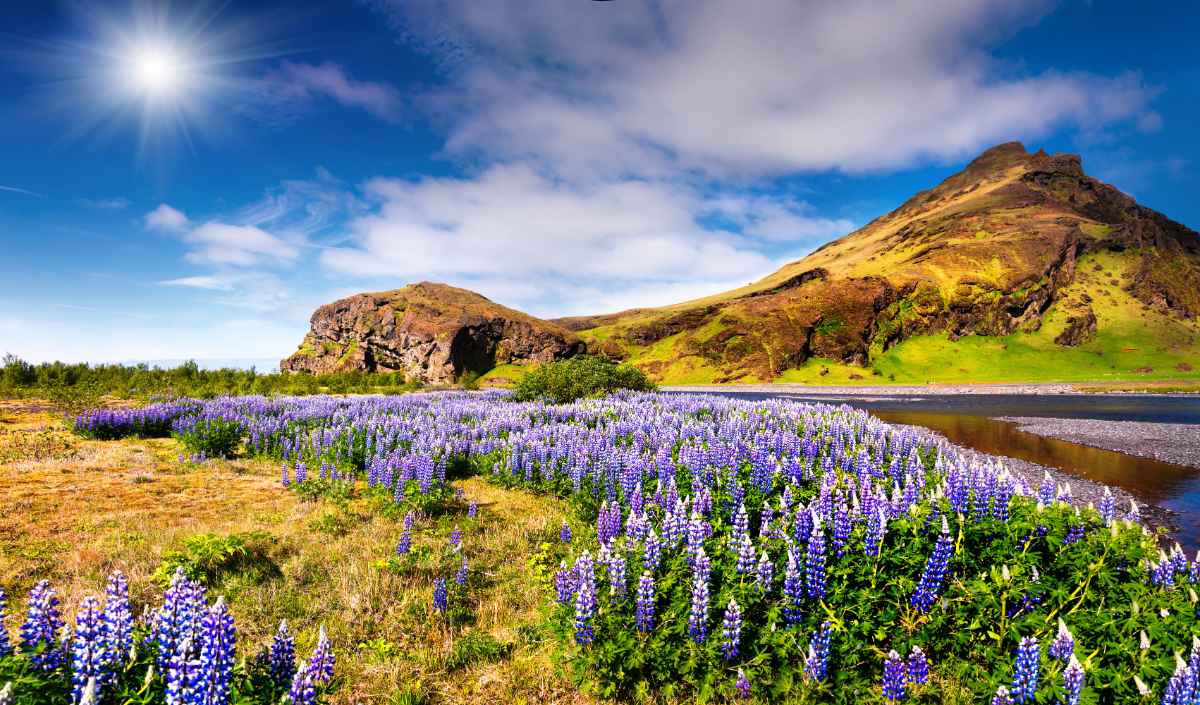
Wildlife in Iceland in Spring
During the Icelandic spring, our beloved animals also start to return. Here are some of the common ones you are most likely to encounter:
- Puffins - Late April into May, they’re back, thousands of them on Dyrholaey and Latrabjarg. Digging, squabbling, looking ridiculous, and somehow majestic.
- Whales - First tours head out. Humpbacks roll, minkes cut the surface, sometimes even a blue whale if you’re lucky. Reykjavík, Akureyri, and Húsavík are all buzzing with boats.
- Arctic terns - Mid to late spring. They return, they scream, they dive at your head if you’re too close. Fast, fearless, everywhere near rivers and lagoons.
- Reindeer: Unlike summer, when reindeer retreat to higher, inaccessible grounds, spring and winter are when they migrate down into the valleys searching for food. This makes them much more visible and accessible.
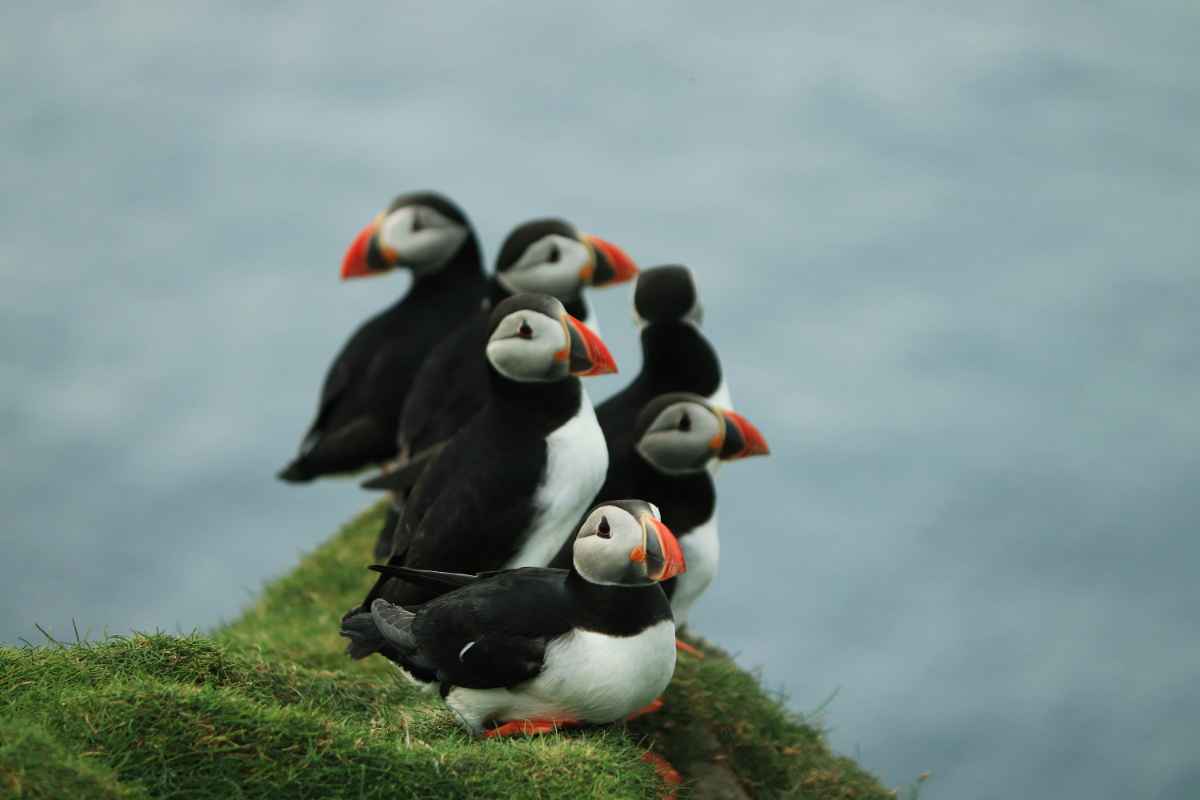
The Best Things to Do in Iceland in Spring
Spring in Iceland is probably your last good chance to catch the Northern Lights before the summer light fades them away. However, don’t set your expectations too high; while there is definitely a chance to see them, it can be trickier as the nights get shorter and brighter.
But don’t worry! If luck isn’t on your side, there are still plenty of other amazing experiences to enjoy in Iceland during spring.
Snorkel or Dive the Silfra Fissure
Spring in Iceland is when the Silfra fissure starts to make sense to visit. Longer days, less chaos, and water so clear it feels unreal. It’s located in the Thingvellir National Park and is the only place on this planet where you can swim between tectonic plates. Try explaining that at dinner back home.
- Water temperature - Always 2-4°C (36-39°F). Glacial melt. Sharp enough to wake you up.
- Visibility - Up to 100 meters (328 feet). The rocks glow, algae, and they shine a neon color.
- Gear - Dry suits do the work. You still feel the cold, just not enough to quit.
- The drift - The current pulls you along. You will glide more than swim. It feels almost meditative.
Beginners can handle it, pros love it, and everyone ends up bragging. Book a snorkeling tour and tick off one of the strangest, most beautiful dives you’ll ever do.
Take a Hike
Hiking during Iceland’s spring weather is about picking the trails that make sense. Around Reykjavík, Mount Esja gives you a proper climb with wide views across the city, while Glymur Waterfall drops 198 meters (650 feet) and rewards you with one of the best canyon walks in the country. Both are simple campervan drives and are worth the effort.
If you want something lighter, Svartifoss in Skaftafell is short, mostly flat, and ends at a wall of basalt columns framed with spring greenery. It feels like stepping into a natural cathedral. The Highlands, though, are still off limits. Landmannalaugar and Fimmvorduhals stay closed until June, with snow and blocked roads keeping tours shut down.
The smart move in spring is to stay with lower, well-marked trails. Wildflowers start to creep in, scenery still delivers, and you get the best of Iceland in the spring without unnecessary risk.
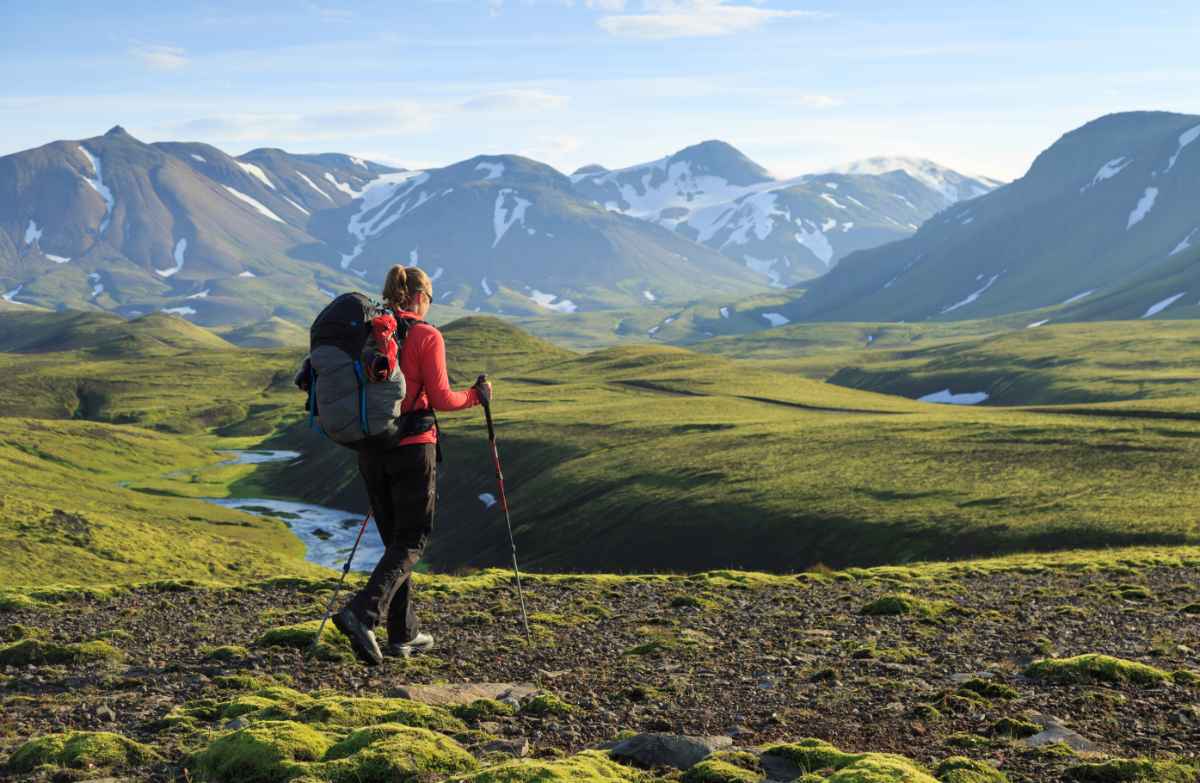
Visit the Waterfalls
Iceland’s springtime cranks the volume. Snow and ice melt fast, rivers fill, and the falls respond. With nearly 10,000 across the island, you notice the power everywhere. Skogafoss on the South Coast is the brute. Sixty meters high (197 feet), twenty-five wide (82 feet).
The mist soaks you before you even get close. On sunny days, rainbows hang in the spray. Seljalandsfoss is famous for the path behind it. Same sixty-meter drop, but the view from inside the curtain is something else. Loud, wet, unforgettable.
Then Gullfoss. The Golden Circle favorite. It’s got two tiers: first eleven meters (36 feet), then twenty-one (69 feet). Fed by glacial melt, the canyon shakes with the impact. All of them are easy to reach off the Ring Road or the Golden Circle. Park the campervan, walk a few minutes, and you are standing in front of some of the loudest icons of Iceland.
Take a Dip in a Hot Spring
Iceland’s springs are the kind of luxury that doesn’t feel fake. Cold air on your face, hot water around you. The mix works, especially in spring when you still need warming up.
Reykjadalur sits about 50 kilometers (31 miles) from Reykjavík. Hike a couple of hours through painted hills and steam vents, then sink into a river that stays 36-40°C (97-104°F). It’s free to soak, but parking sets you back 200 ISK, about 1.50 USD per hour.
The Blue Lagoon is Iceland’s celebrity hot spring. Just twenty minutes from Keflavík airport, its milky water steams at 38-40°C (100–104°F). Entry starts at 8,990 ISK, about 74 USD. It’s pricey, always busy, and yes, you’ll still take the photo.
Sky Lagoon, just outside Reykjavík, feels a bit more relaxed. It’s got Infinity-pool edges that spill toward the ocean, the same 38-40°C water wrapping you in heat. Entry begins at 8,490 ISK, around 68 USD.
Go Horse Riding
Riding an Icelandic horse is not just another tourist box to tick. These animals are national symbols. Small, sturdy, oddly stylish with their windswept manes. And they carry beginners like saints.
The tölt is their party trick. A four-beat gait that keeps one hoof on the ground at all times. Translation: no bouncing, no sore backside, even after hours. You sit there thinking, ‘Why doesn’t every horse on earth do this?’
Spring helps. Fewer tourists clogging the trails, so you actually hear hoofbeats instead of camera shutters. The routes cut through meadows greening up, over volcanic landscapes that look half-finished, and into valleys with views that stop conversation.
Plenty of stables sit near Reykjavík and across the south. There are even horse tours that go out toward Reykjadalur. For once, the cliché is true. Horseback really is the best seat in the house.
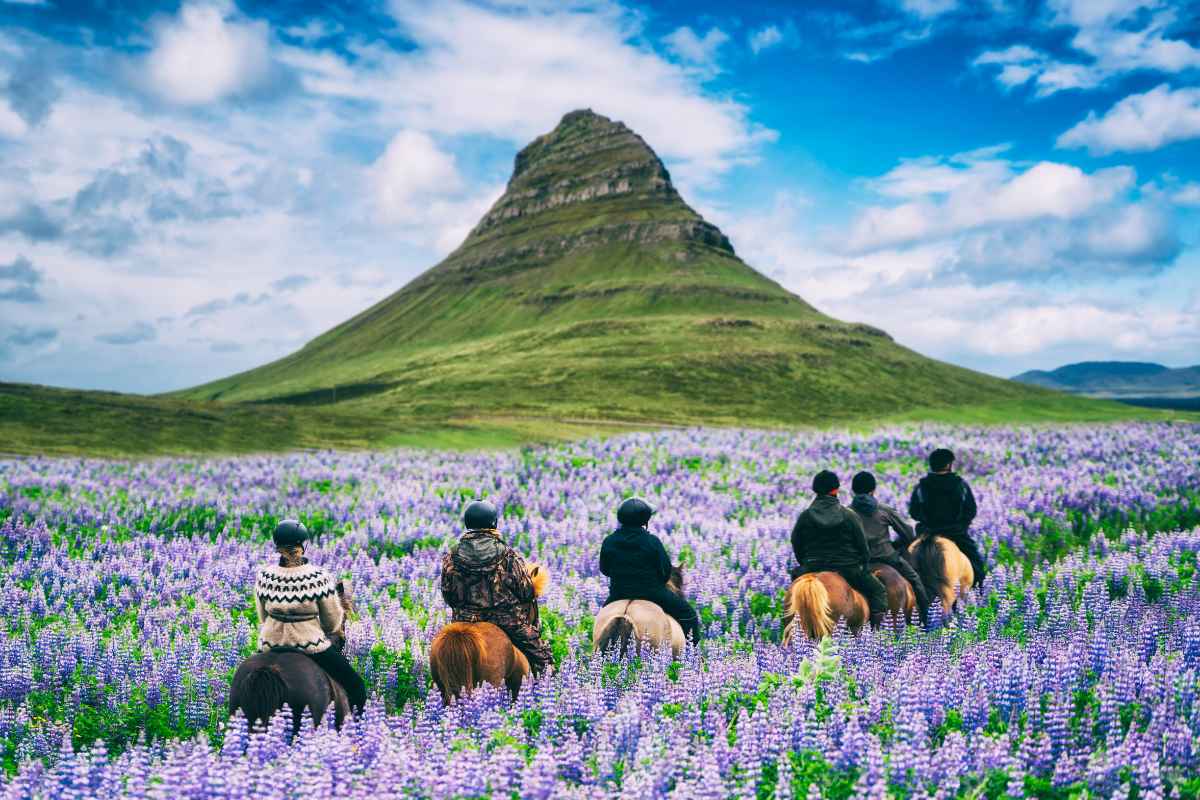
Attend a Festival or an Event
Iceland’s springtime is not only about scenery. It is also the season when locals head outside and fill the calendar with festivals. The air still has a bite, but the streets get busy anyway. The biggest tradition is Sumardagurinn Fyrsti, the First Day of Summer, held on the first Thursday in April.
Town squares and city parks turn into open-air stages with music, parades, and food stalls. Easter weekend in the Westfjords belongs to Aldrei Fór Ég Suður, a free music festival in Ísafjörður where local bands pack venues and the crowds feel more like family than tourists.
By May, Reykjavík throws its own mix of culture. Folk Festival, Innovation Week, and large arts exhibitions take over halls and theatres. Smaller towns keep it simple with artisan markets, local fairs, and family gatherings.
Tips for Planning a Trip to Iceland in Spring
Headed for Iceland in the spring? A few smart moves can make the difference between a smooth trip and a story you only tell once. Here’s what actually helps.
Keep Waterproof Clothing and Gear Close
Packing waterproof clothing in Iceland is not optional. It is survival. Start with layers: thermal tops, a fleece that actually traps heat, and then a jacket that does more than look good in photos. Pants need to handle puddles and mud without quitting halfway through.
Boots should have a grip that works on wet rock and uneven ground, not just city pavement. Quick-dry socks keep you sane, and a rain cover saves your backpack from becoming a sponge.
Keep a Close Eye on the Weather and Road Conditions
Roads open, close, and vanish under snow or mud without notice. That is why locals check safetravel.is, umferdin.is, and vedur.is before moving. Do the same.
Driving a campervan here is not like cruising a highway at home. One bad call and you are stuck, or worse, sliding. A route that looked fine an hour ago might be blocked now, and detours are brutal. Staying updated is not paranoia; it is the only way you keep the van upright and the trip alive.
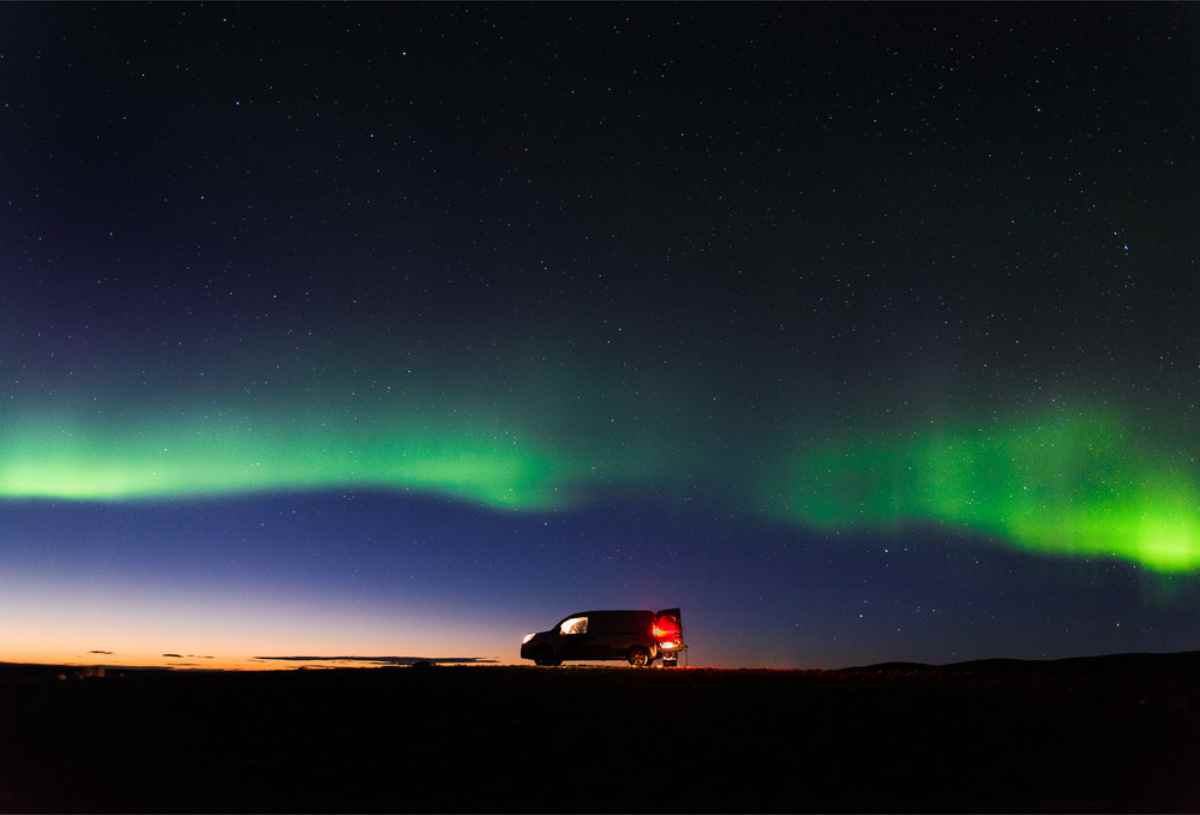
Opt for a Campervan and Camping
Spring is when a campervan makes sense. Hotels stay expensive, guesthouses fill fast, and a van gives you freedom that fixed walls or tours never can. Change plans on the fly, chase clear skies, and stop where the view is better than the brochure.
By mid-April, campsites begin opening again, so you are not just parking in random lots. Facilities might still be basic, but you get a place to plug in, cook, and crash without draining your budget. Campervans are cheaper than hotels, more flexible than Airbnbs, and built for the shifting rhythm of Iceland in the spring.
What to Pack for a Trip to Iceland in Spring
|
Category |
What to Pack |
Notes |
|
Outerwear |
Raincoat, waterproof jacket, waterproof pants |
Layers keep you dry in shifting conditions |
|
Warm layers |
Fleece or woolen sweater, thermal vests, thermal leggings, wool socks |
Buy authentic Icelandic wool if you want the real deal |
|
Footwear |
Waterproof hiking boots, flip flops |
Boots for trails, flip flops for hot springs, or changing rooms |
|
Basics |
T-shirts, long-sleeved shirts, casual pants, and underwear |
Keep it simple, versatile |
|
Accessories |
Warm hat, gloves, scarf, sunglasses |
Small but critical |
|
Hot spring kit |
Swimsuit, quick-dry towel |
Essential for lagoons and natural springs |
|
Essentials |
Toiletries, meds, backpack, water bottle |
Icelandic tap water is top quality |
|
Electronics |
Chargers, cables, power bank, adaptor |
Don’t forget plug compatibility |
FAQs about Iceland in Spring
When is Spring in Iceland?
Spring in Iceland runs from March to May, when snow begins to melt, daylight stretches longer, and roads slowly reopen, making it a true shoulder season for travelers.
Is spring a good time to visit Iceland?
Yes, Iceland in the spring offers lower prices, fewer tourists, and plenty of daylight. Just expect unpredictable weather and plan with flexibility to make the most of your trip.
Is it crowded in Iceland in spring?
No, spring is quieter than summer. Attractions feel less packed, roads are less busy, and campervan travelers get space to explore without competing for every parking spot or viewpoint.
Is it possible to see the Northern Lights in Iceland in spring?
Yes, during March and early April, when nights remain dark enough. By May, daylight stretches too long, making aurora viewing unlikely, so plan early spring for your best chance.
Can you hike in Iceland in spring?
Yes, lower elevation trails like Mount Esja or Svartifoss are open. Highland routes remain closed until June.
Is it too cold to go to Iceland in April?
April temperatures average 0-7°C (32-45°F). Chilly but manageable with thermal layers, a solid waterproof jacket, and proper boots. Comfort depends more on your clothing than the actual weather.
Is it safe to drive in Iceland in spring?
By April, the Ring Road is generally safe for driving. Always check umferdin.is for updates, as conditions can change quickly and some routes remain closed into early summer.
Where to see puffins in Iceland in spring?
Puffins arrive from late April into May. Top viewing spots include Látrabjarg cliffs in the Westfjords and Dyrhólaey on the South Coast, where colonies nest and gather.



 By
By 

